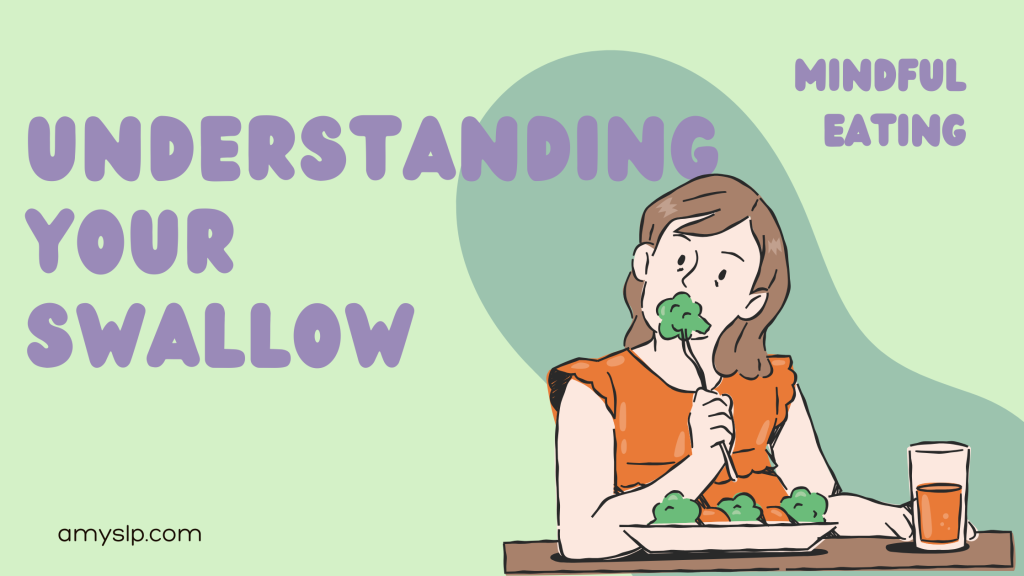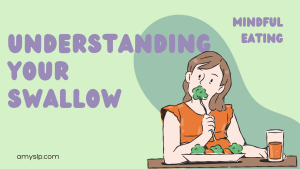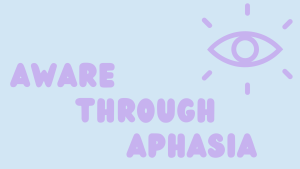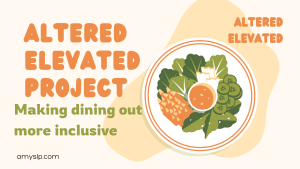This article is the first in a pseudodysphagia (fear of swallowing) series. It can be just as limiting as a physical swallowing disorder, but because it exists in the space between body and mind, it’s often misunderstood and dismissed. Your participation, as well as questions and feedback, are welcome here.
Eating had been simple. It’s something we all did without hesitation, something woven into daily life, shared with others. But when fear takes over, it isn’t simple anymore. Swallowing becomes something you overthink, food turns into a source of stress, and the idea of a meal feels like a problem to solve rather than something to enjoy.
If you’re struggling with pseudodysphagia, you might feel like you have to control every part of your swallow, second-guess every movement in your throat, or even question whether your body will do what it’s supposed to do. But swallowing isn’t something you have to force; it’s a reflex your body is designed to do. When fear takes over, it disrupts this natural rhythm, making eating feel foreign, effortful. This article will give you the foundational knowledge to understand your own swallowing process, break it down into manageable pieces, and start using strategies that support ease and confidence.
BREAKING DOWN THE SWALLOWING PROCESS
Swallowing isn’t just one motion; it’s a highly coordinated sequence of muscle movements that involve your mouth, throat, and esophagus. Understanding these steps—and identifying where anxiety hijacks your process—can help you regain control.
Oral Phase (chewing/preparation for swallow)
- Bite or sip selection: Picking up food/utensil/cup and delivering to your mouth
- Labial seal: Keeping your lips closed so nothing spills out
- Oral preparation: Using your tongue and teeth to chew and mix food with saliva
- Bolus formation: Creating a cohesive ball of food (bolus) that is ready to swallow
- Tongue propulsion: Moving the bolus to the back of your mouth for swallowing
Common Anxiety Triggers and Strategies to Trial
- Feeling of a full mouth: Smaller bites ensure better control and prevents overwhelming sensations
- Food feeling stuck to the tongue or roof of the mouth: Moistening dry foods with sauces or broths can add to saliva to get past the tacky textures that crackers and breads can create
Pharyngeal Phase (starting the reflex)
- Soft palate elevation: Food is block from going up into the nose cavity
- Swallow reflex initiation: The brain triggers the swallow as the bolus moves past the tongue base
- Laryngeal elevation/excursion and closure: The voice box (larynx) lifts up and out and closes to keep food out of the airway
- Pharyngeal contraction: Muscles squeeze from top to bottom to push food toward the esophagus
Common Anxiety Triggers and Strategies to Trial
- Swallow won’t “trigger”: Paced swallowing and taking deep breaths through the nose prior to the swallow, keep a “bail pail” nearby so you know you can always safely pause a bite and catch your breath until you’re ready again
- Food down the wrong pipe: Chin tuck down toward your chest while swallowing can help line up a safe path to the stomach
Esophageal Phase (transporting food to the stomach)
- Upper esophageal sphincter relaxation: The top of the esophagus opens to allow food through
- Peristalsis activation: A series of muscle contractions moves the food downward
- Lower esophageal sphincter relaxation: Bottom of the esophagus opens to let food into the stomach
Common Anxiety Triggers and Strategies to Trial
- Feeling like food is “stuck in the throat or chest: Upright positioning for at least 30 minutes after eating can help your confidence
- The need to drink lots of liquids to “wash food down”: Alternate bites and sips to keep mouth moist without over-reliance
- Sensations of tightness, even if swallowing is successful: Mindful relaxation techniques reduce tension in the neck and shoulders before a meal
THE NEXT STEP CLOSEST IN: Exposure
The key to overcoming pseudodysphagia is exposure through success, not force. The goal isn’t to push yourself past what feels safe, but rather to build confidence in a way that’s gradual and sustainable. After learning the different phases, choose a challenge below that applies to you and start there.
- If your anxiety starts before swallowing: Take a small bite, move it around in your mouth, and hold it without swallowing. Notice that your body naturally starts to prepare for the swallow. Allow yourself to feel that sensation without rushing.
- If your fear is about triggering the swallow: Try swallowing a small sip of water with your eyes closed, focusing only on the sensation of the swallow completing successfully.
- If you fear food getting stuck: Take one deep breath with a longer exhale (4 seconds in, 6-8 seconds out) before an intentional bite of a soft food, such as a banana or yogurt, and swallow. Follow with another deep breath as you reset your body.
You may want to start a log for the week and see that you meet or beat the number of challenges you offer yourself, regardless of outcomes. Comment below your plan, and come back for part two in the pseudodysphagia series.




